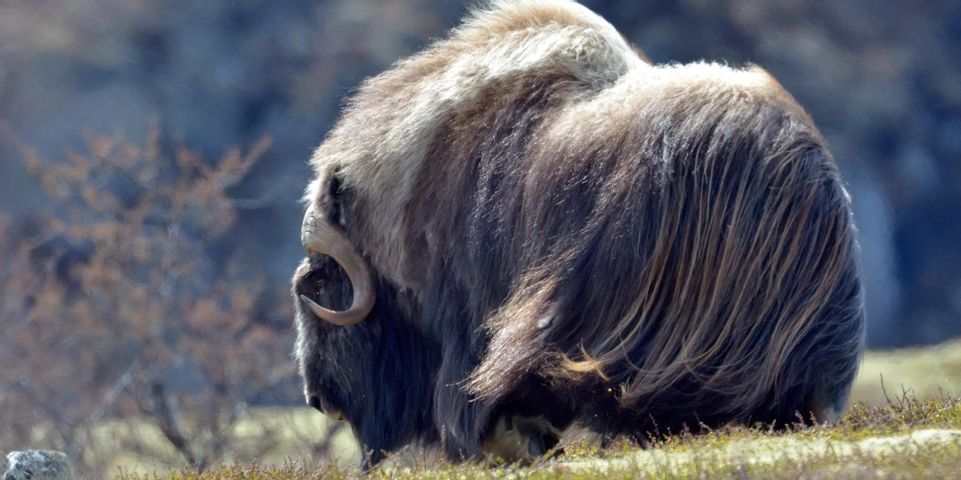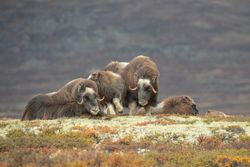Learning About the Impressive Musk Ox

Roaming in the arctic is an elegant and striking animal you may not know much about: the musk ox. Beyond its interesting attributes and characteristics, the musk ox sheds qiviut, its warm undercoat, every spring, which is used to create sustainable, humane scarves and stoles. Here is a deeper dive into the musk ox and its many interesting facets.
What Is the Musk Ox Like?
Musk oxen are herbivores that survive on a diet of roots, mosses, and a variety of other greens. Since they live in arctic areas, the animals are accustomed to using their hooves to clear out snow and easily access these food sources below the surface.
 They live and travel as a herd, which usually consists of around 20-30 oxen. Their primary predators are wolves, and when one nears, the herd forms a protective circle to guard their young. Beyond their sheer size, musk oxen can count on their sharp horns to deter attacks.
They live and travel as a herd, which usually consists of around 20-30 oxen. Their primary predators are wolves, and when one nears, the herd forms a protective circle to guard their young. Beyond their sheer size, musk oxen can count on their sharp horns to deter attacks.
What Is Qiviut?
Because musk oxen live in extremely cold environments, they rely on an intensely thick coat for warmth. They have outer hairs, known as guard hairs, and an undercoat called qiviut. This material is remarkably lightweight, and it offers eight times more warmth than wool. When the weather warms in spring, each musk ox sheds their coat, and the stray fibers can be gathered and turned into soft and warm clothing. To help each animal remove the qiviut, sometimes a brush is used.
If you’re interested in trying out some qiviut goods for yourself, visit Oomingmak Musk Ox Producers Co-Operative in Anchorage, AK. Serving the community since 1969, the cultural gift store is collectively run by 250 Native Alaskan women. To find out more about their ultra-soft, musk oxen-sourced scarves and stoles, call (907) 272-9225. You can also learn more about the co-operative by visiting their website.
About the Business
Have a question? Ask the experts!
Send your question

